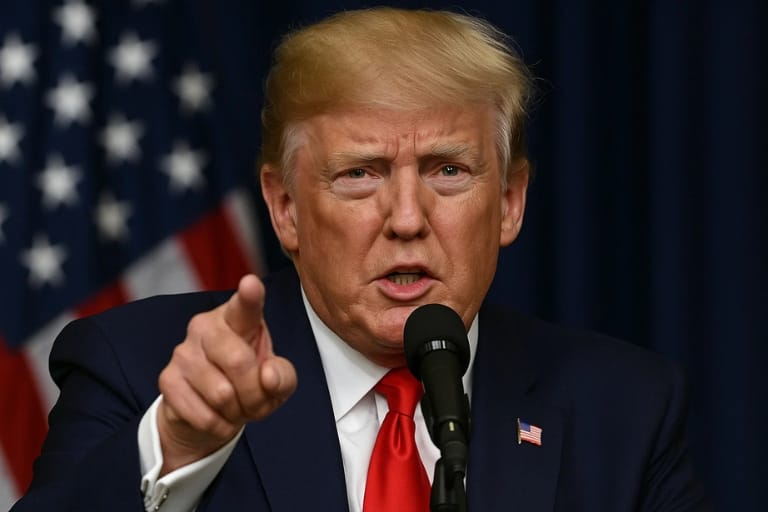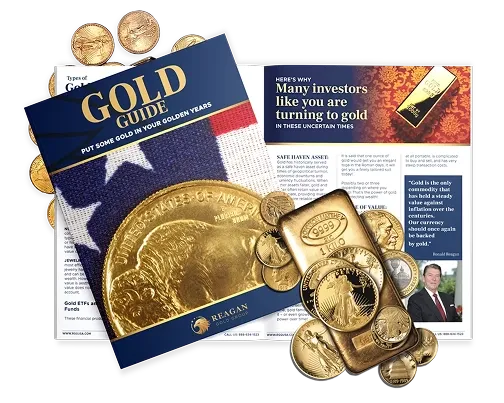How One Word Rewrote the Rules of Wealth Protection

The story begins three weeks earlier. In conference rooms overlooking Wall Street, wealth managers stared at spreadsheets that no longer made sense. Tariffs on Swiss imports reached 39%. The entire precious metals supply chain — from Zurich refineries to New York vaults — held its breath.
Gold had always been the quiet guardian. The asset that whispered when others screamed.
But tariff uncertainty threatened to break that sacred covenant between fear and protection.
Swiss refiners processed 70% of the world's newly mined gold. A tariff wall would have shattered those supply chains like glass. Premiums spiked. Dealers hedged frantically. The London Bullion Market Association issued careful statements that barely masked their panic.
This wasn't just about trading margins. This was about the fundamental question:
Could gold still protect wealth if governments could price it out of reach?
The Pattern: When Power Meets Precious Metal
The data tells a different story than the headlines suggest.
Central banks purchased 1,037 tonnes of gold in 2024 — the second-highest annual total on record. China's reserves grew by 225 tonnes. Russia, despite sanctions, accumulated another 150 tonnes. Even smaller nations like Poland and Singapore expanded their gold holdings.
These weren't speculative bets. These were strategic moves by institutions that understand power.
Gold production peaked at 3,200 tonnes annually — barely 2% growth in above-ground stocks. Meanwhile, global money supply expanded at multiples of economic growth. The mathematics were simple: scarcity versus abundance. Physical versus digital. Real versus promised.
By October 2025, gold shattered previous records, reaching $4,379.96 per ounce. Silver followed, surging above $54. The U.S. dollar index fell 11% in the first half of 2025 — its worst performance since 1973. The U.S. national debt crossed $38 trillion, climbing $69,714 per second.
The tariff threat revealed something deeper. In a world where governments could weaponize trade policy, gold's exemption became a declaration of intent. Not just economic policy, but recognition of what matters when everything else fails.
BREAKING NEWS:
Trump just declared it — “Gold will not be tariffed!”
In a storm of inflation, shaky markets, and endless taxes, this one line changes everything.
Gold has historically served as a reliable hedge against financial uncertainty—and Trump’s statement that it won’t be tariffed reinforces its appeal.
That means you can still move part of your IRA or 401(k) into real, physical gold & silver — with no penalties, no tariffs, no games.
Shield your wealth while this loophole stays open.
The Shift: A Single Declaration Changes Everything
At 11:23 AM Eastern, Trump's Truth Social post landed like a precision strike:
"Gold will not be tariffed!"
Four words. No elaboration. No caveats.
The precious metals market exhaled collectively. Spot gold fell 1.2% as the premium over spot collapsed. But the real story wasn't in the price movement — it was in what the exemption revealed about gold's unique status in the American economic vision.
This wasn't just regulatory clarity. This was acknowledgment that gold occupies a different category entirely. Not commodity. Not speculation. But foundation.
The executive order that followed on September 5th made it official. Gold bars — classified under specific HS codes — would face 0% tariffs from all countries. The London Bullion Market Association called it a "welcome development". Industry insiders called it something else: recognition of reality.
The Consequence: What This Means for Everyday Wealth
For the pension fund manager in Ohio, the exemption meant stability in an unstable world. For the small business owner in Arizona, it meant the gold IRA remained a viable wealth protection strategy. For the retiree in Florida, it meant the rules wouldn't change overnight.
But the deeper consequence runs beyond individual portfolios. The exemption established a precedent: that certain assets deserve protection from the chaos of trade wars and political uncertainty. That some forms of wealth preservation transcend national borders and political cycles.
The correlation data from 2025 shows gold's evolution. While maintaining its hedge properties, it began showing positive correlations with equity markets during certain periods — not weakness, but adaptation. A sign that even in changing markets, gold finds new ways to serve its primary function: wealth preservation.
With the U.S. dollar predicted to depreciate another 10% by the end of 2026, and inflation concerns remaining persistent despite September's 3.0% CPI, the case for tangible wealth protection has never been clearer.
The Weight of Certainty
I've watched markets panic and recover a thousand times. But this felt different.
Not because of the price movement or the policy implications, but because of what the exemption revealed about our relationship with uncertainty itself.
Gold doesn't promise returns. It promises something more valuable: continuity. The knowledge that when currencies falter and markets convulse, something tangible remains. The tariff exemption didn't create this quality — it simply acknowledged what has always been true.
The 401(k) to gold IRA rollover process has become remarkably straightforward. Direct rollovers move funds from employer-sponsored retirement plans to self-directed IRAs without tax penalties or withholding. The 60-day rule for indirect rollovers remains strict, but the direct method eliminates that risk entirely.
For 2025, contribution limits stand at $7,000 annually, or $8,000 if you're 50 or older. The IRS requires gold purity of at least 99.5%. Storage must occur in approved depositories — not personal possession. But these aren't obstacles. They're guardrails for protection that lasts.
In the end, the fluorescent lights stopped flickering. The screens went quiet. But the underlying reality remained unchanged: in a world of infinite complexity, some things stay simple. Some things endure.
The August declaration is over. The executive orders are filed. The supply chains hum again with Swiss precision.
But the larger story continues in the quiet decisions made in financial planning offices across America. The recognition that in turbulent times, the oldest forms of wealth protection often prove the most reliable.
The U.S. dollar declined 11% in the first half of 2025. The national debt accelerated to $38 trillion, with interest payments exceeding $1 trillion annually. Market volatility spiked repeatedly, creating turbulent conditions even for traditional 60/40 portfolios.
The rules have been clarified. The path remains open. The only question left is whether you'll take it.
—
Claire West
